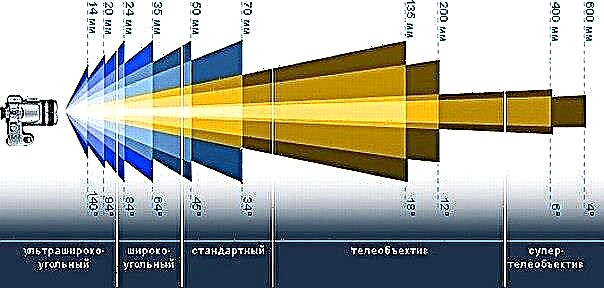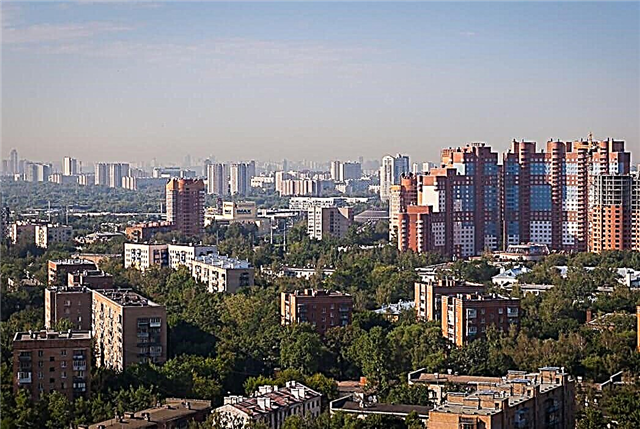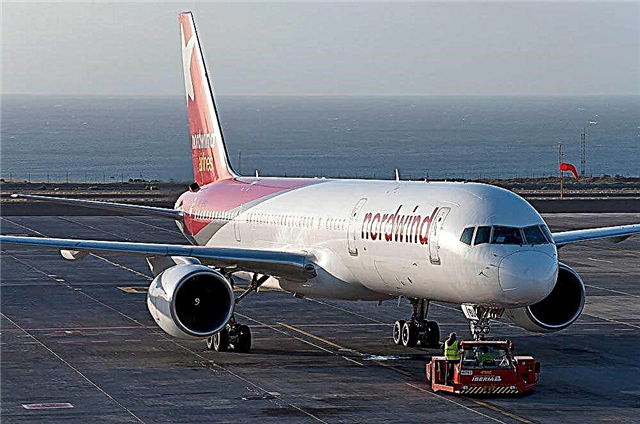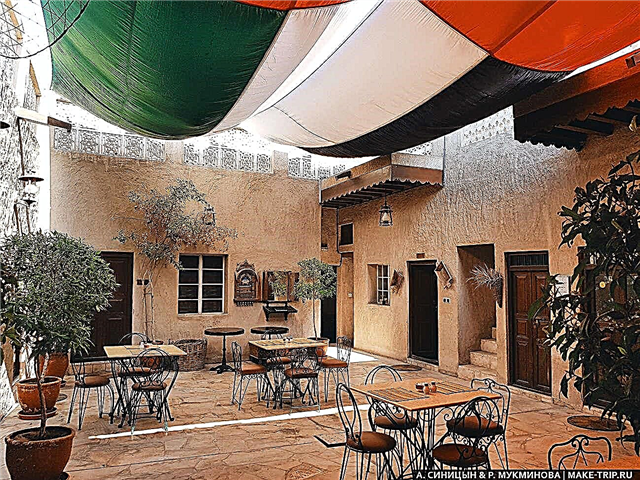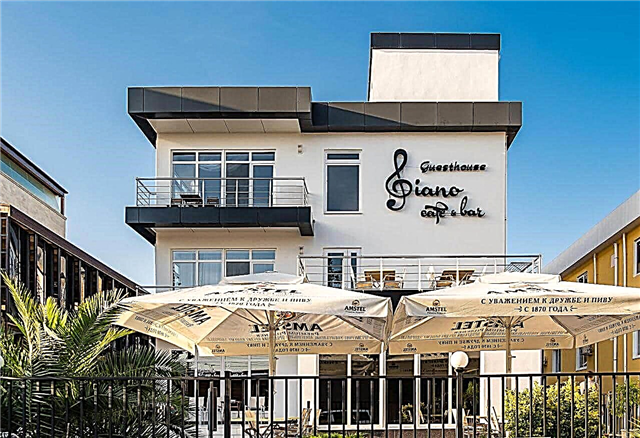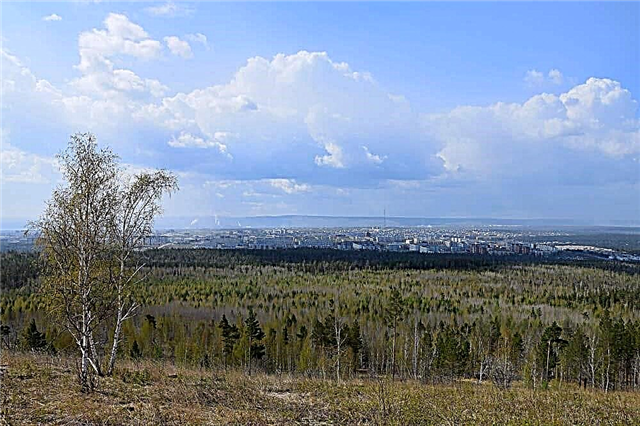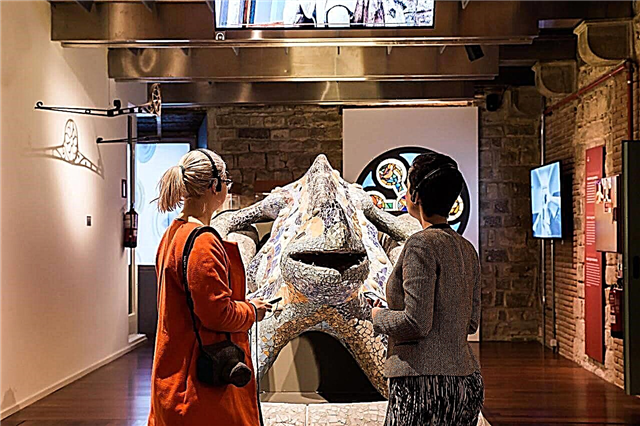A significant increase in tourism in Barcelona was ensured by the holding of the Olympic Games in 1992. Since then, the number of guests has been growing every year, so the city's museums try to cover a wide range of topics. More and more new ones are opening, and the old ones are being modernized and renewed their expositions. Barcelona is on a trend: "classic" museums for all big cities, such as historical or contemporary art, are available and very good.
But the most interesting objects are precisely those that make the capital of Catalonia unique. First of all, these are buildings associated with the name of Gaudi. Thanks to him and his colleagues, Barcelona has become an open-air architectural museum. Another important person for the tourism industry is Picasso: it is not for nothing that the museum in his honor holds the first place in terms of attendance.
The most interesting and popular museums in Barcelona
List, photo with title and short description!
National Art Museum of Catalonia
The collection of painting, arts and crafts and sculpture is gathered in the palace on the Montjuïc mountain. From here you can enjoy a panoramic view of the Old Town. The collection is divided into 8 permanent exhibitions, which are periodically renewed at the expense of funds. The numismatic department is filled with coins from the 6th century and subsequent centuries. Italian painters are widely represented, as well as different styles from Romanesque to Gothic.
Address: Barcelona, Palau Nacional, Parc de Montjuïc
Website: museunacional.cat

Casa Mila
The last secular work of Gaudí. The master's architectural masterpiece was erected at the beginning of the 20th century. Conventionally, the house on Passeig de Gracia street can be called angular, although smooth lines prevail in its shape. Included in the list of UNESCO World Heritage Sites. Particularly noteworthy are the decoration of the balconies, the roof and chimneys, as well as the absence of load-bearing walls inside. One of the floors is reserved for the Gaudí Museum-Apartment.
Address: Barcelona, Paseo de Gracia, 92
Website: lapedrera.com

Casa Batllo
The translation of the name is "house of bones". Built in 1877 as a residential building commissioned by a textile magnate. At the beginning of the 20th century, it was rebuilt according to Gaudí's plan: smooth lines, light distribution, mixing colors, the minimum required number of partitions and walls. Has 8 floors and basements. The best masters of arts and crafts of their time worked on the interiors.
Address: Barcelona, Passeig de Gracia, 43
Website: casabatllo.es

Sagrada Familia
The Sagrada Familia is considered the best work of Gaudí. Its construction began in 1882 and to some extent continues to this day. In the interior arrangement of the premises, the architect tried to avoid straight lines. Columns, vaults and stained glass windows are mesmerizing. The Sagrada Familia has long since departed from its original religious significance and turned into a cultural center with a museum and a school.
Address: Barcelona, Carrer de Mallorca, 401
Website: sagradafamilia.org

Museum of the History of the City of Barcelona
Located on the Royal Square in a mansion named Casa Clariana Padeias. The history of the city dates back to the times of ancient Roman settlements on these lands. One of them was found thanks to excavations, and it is part of the exhibition. The exhibitions show in detail how Barcelona developed and changed someone else's way of life. The museum contains collections of coins, books, paintings, fossils, furniture and tableware.
Address: Barcelona, Plaça del Rei, 7-9
Site: ajuntament.barcelona.cat

Picasso Museum
The 15th century mansion where the collection is located is called Berenguer de Aguilar. Probably by the name of the previous owner. In total, the building occupies half a block: it consists of chambers connected to each other. The founder of the museum, Jaime Sabartes, is a friend and assistant of Picasso, who donated about 600 works of the master to the state. Among them, both sketches and finished paintings from different periods of creativity.
Address: Barcelona, Carrer Montcada, 15-23
Website: museupicasso.bcn.cat
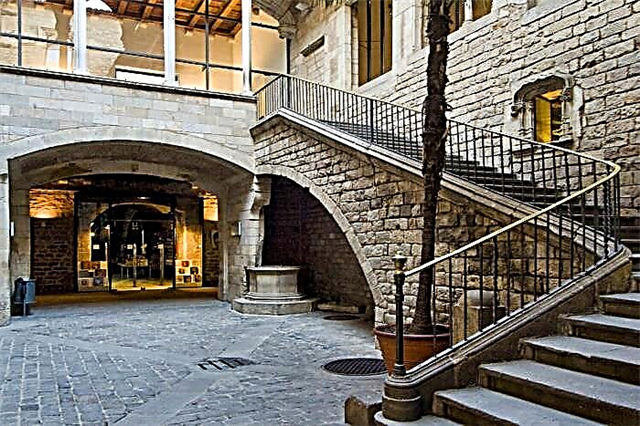
Barcelona Football Club Museum
The opening took place in 1984. The current version of the museum was presented in 2010 after a long reconstruction. The exposition area is 3500 m². Modern technologies help to make the excursion as immersive as possible in the football atmosphere. The history of Barcelona “runs” before the eyes of visitors in the form of frames on large screens. The stands display not only trophies, but also memorable paraphernalia.
Address: Barcelona, Avinguda Arístides Maillol, 6-18
Site: fcbarcelona.com

Science Museum
The official name is CosmoCaixa. The area is over 5 thousand square meters. Exhibition halls are adjacent to the planetarium. Five floors are connected by a serpentine staircase. The most picturesque site is the recreated Amazon rainforest. During the excursion, guests participate in experiments. There is an observation deck overlooking the city and the Montjuic mountain. Several times recognized as the best science museum in Europe.
Address: Barcelona, Isaac Newton, 26
Website: cosmocaixa.es

Maritime museum
The former Royal Shipyard was converted into a Maritime Museum in 1929. The building is designed in the medieval Gothic style, and itself is a monument of history and culture. In the spacious chambers, tourists will find a full-size restored schooner that will take your breath away, separate exhibits that tell the story of navigation, old maps, ship models and paintings on a nautical theme.
Address: Barcelona, Av. de les Drassanes s / n
Site: mmb.cat

Spanish village
The area of the open-air museum on Montjuic is impressive. Its task is to tell guests about different parts of the country. Through the medieval gate, visitors enter a typical Spanish square, from where they begin to get to know the “village”. Quarters with dozens of authentic buildings diverge in different directions. Currently, there are about 20 workshops on the territory, forming the "City of Craftsmen".
Address: Barcelona, Av. Francesc Ferrer i Guàrdia, 13
Site: poble-espanyol.com

Gaudi House Museum
Located in Park Guell, where everything lives and exists according to the laws of the world of Gaudí. The Catalan architect has left behind a rich legacy. And the house set aside for his memorial museum is one of the most important city objects. The building is rich in bright details: balconies, casements on the windows, the shape of the walls and their color. And inside there are personal belongings, rare furniture, paintings and many other items related to Gaudí.
Address: Barcelona, Carrer d'Olot, 1
Website: casamuseugaudi.org

Museum of Catalan Modernism
The abbreviated name of the museum is MMCAT. It has been working since 2010. The interiors seem to transport guests to another era. Key exhibits are paintings, arts and crafts, furniture, dishes, sculptures. For Barcelona and all of Catalonia, modernism is a special style. It can be traced not only in painting, but also in architecture; therefore, some city blocks have been turned into open-air museums.
Address: Barcelona, Balmes, 48
Site: mmbcn.cat

Gaudi Exhibition Center
The cultural site was created for fans of Gaudí's work, who want to look at his work from a different perspective. Guests are invited to explore 8 main architectural masterpieces created by the master with the help of modern technologies. Projections and images are displayed on huge panels. The tour can be ordered as an audio guide. In addition, the exhibition "The World of Gaudi" is open, introducing topics of interest to him.
Address: Barcelona, Pla de la Seu, 7
Website: gaudicentre.cat

Modern Art Museum
The museum building stands out against the background of the old buildings: modernist style, light ledges, glass facade. Since 1995, the entrance has been open to everyone. The works of art by Spanish artists are divided into 3 groups by year: 40-50s, 60-70s and 80s. In addition, temporary exhibitions are renewed approximately once a quarter. They are themed and can be about anything like stone products and engravings.
Address: Barcelona, Plaça dels Àngels, 1
Site: macba.cat

Joan Miró Foundation
The premises for the museum were designed by a friend of the Spanish artist - architect Jose-Luis Sert. Funds - 14 thousand storage units. Of these - almost 8.5 thousand - the work of Miro himself. For the first time, a large exhibition in his honor was held in 1968. She enjoyed such public attention. Therefore, a full-fledged Joan Miró Foundation was created - a place where masterpieces of abstract and surreal art are collected.
Address: Barcelona, Parc de Montjuic
Website: fmirobcn.org

Museum of the History of Catalonia
Occupies the former warehouses of the Mar Palace. Before the museum was opened for guests, the building was restored by 1881. The exposition area is about 4 thousand square meters. Remains of ancient people, tools straight from the Neolithic, cult objects, things from other parts of the world brought to Catalonia by travelers and merchants - all this is part of the collection. Civil wars are also covered in detail - a sore point for autonomy to this day.
Address: Barcelona, Pau Vila, 3
Site: mhcat.cat

Museum of Natural Sciences
The number of exhibits for more than 130 years of existence has exceeded 3 million. For this reason, it was decided to allocate three buildings at once for the museum. The Triangular Forum on rue Leonardo da Vinci is home to a department called Blau. The Ciutadella Park is home to the Martorell Museum and the Nature Laboratory. And on Mount Montjuic, you can find the Botanical Institute and the Historical Botanical Garden, where they are engaged in the preservation of Mediterranean plant species.
Address: Barcelona, Plaça Leonardo da Vinci, 4-5
Website: museuciencies.cat

Museum of World Cultures
The purpose of the collection is to acquaint guests with the culture of distant parts of the world - America, Asia, Oceania and Africa. The museum is based on two collections. The first has 30 thousand items and belongs to the ethnographic museum. The second is the Folch Foundation, which contains 3.5 thousand works of art. They were merged in 2012. The main part of the exhibition is located in a building opposite the Picasso Museum.
Address: Barcelona, Montcada Street, 12
Site: barcelona.cat

European Museum of Contemporary Art
The vast majority of contemporary art museums tend to focus on revolutionary and even provocative works. MEAM's goal is to show paintings and sculptures by living creators who have not rejected classical realism and similar styles. Funds and exhibitions are based in the Palau Gomis, built in the 18th century. On the basis of the museum, an annual art competition is held, giving novice authors a path to life.
Address: Barcelona, Barra de Ferro, 5
Website: meam.es

The Wax Museum
Occupies the building of the former bank since 1973. Wax copies of famous historical figures coexist with heroes of literary works. Some figures stand alone, others are part of the recreated scenes. One of the most colorful "performances" is the torture chamber. There are more than 350 exhibits in the collection. You can come close to them and take a photo. The museum is open daily in summer and a couple of times a week in other seasons.
Address: Barcelona, Pasaje de la Blanca, 7
Website: museocerabcn.com

Museum of Music
Baroque guitars, lutes, cellos, Japanese koto - musical instruments from different eras and parts of the world are exhibited here. Of more than 1,500 items, about a third are available for inspection. Phonograms and gramophones are also presented at the stands. Large base of audiovisual recordings. Concerts are held: mostly artists play rare instruments temporarily borrowed from the museum.
Address: Barcelona, L'Auditori. Lepant, 150
Site: ajuntament.barcelona.cat

Design Museum
A lot is connected with design in the city: from high-quality specialized education to street decoration. It was only a matter of time before the museum appeared in Glories Square. The building of an unusual shape was built specifically for this project. Most of it is hidden underground. The number of exhibits has already exceeded 70 thousand. The collection is dedicated not only to clothing, but also to objects of everyday environment, interiors and graphic works.
Address: Barcelona, Pl. de les Glories Catalanes, 37
Site: ajuntament.barcelona.cat

Olympic Sports Museum named after Samaranch
Has been working since 2007. Located on the Montjuic mountain near the stadium "Luis Companis", which hosted the 1992 Olympics. Architects Xavier Basian and Tony Camps were responsible for the construction of the museum building. The total area is approximately 4 thousand square meters. The collection pays homage to the Games that attracted tourists to Barcelona and tells the history of the sport as a whole. Like many museums in the city, closed on Mondays.
Address: Barcelona, Avda de l'Estadi, 60
Website: museuolimpicbcn.cat

Can Framis Museum
The official opening took place in 2009. The cultural center in the Poblenou district has settled in the interiors of a renovated former textile factory. 3 floors are occupied by works of local artists, created from the 60s of the last century to the present day. The artworks on display are renewed annually, and once a quarter, Can Framis is home to a new temporary exhibition.
Address: Barcelona, Carrer de Roc Boronat, 116, 126
Site: fundaciovilacasas.com

Archaeological Museum
Located in the former Palace of Fine Arts in Montjuic Park. The exposition is divided into 5 thematic parts: prehistoric times, Phoenicians and Greeks, the emergence of the Iberian culture, the Roman period, the Visigoths in Catalonia. The excursion allows you to trace how the tools of labor, weapons and household items were improved, as well as the cultural traditions of different peoples who lived here changed and adapted.
Address: Barcelona, Passeig de Santa Madrona, 39-41
Website: mac.cat

Frederic Mares Museum
Part of the Royal Castle in the Gothic Quarter is given over to a museum named after the artist and collector Mares. One of the exhibitions introduces crucifixes from different eras, made from all kinds of materials. Another showcases masterpieces of monumental sculpture. There are sections with theatrical binoculars, coins and banknotes from all over the world, locks with keys, snuff boxes and pipes.
Address: Barcelona, Plaça de Sant Iu, 5
Website: museumares.bcn.es

Virraine Palace
Built in the 70s of the 18th century. Also called the "Palace of the Viceroy". The exterior emphasizes the influence of French traditions on the architecture of Catalonia at that time. The interiors are also designed in the French Rococo style: the eye does not immediately get used to the abundance of luxurious details. Particularly noteworthy is the dining room and its vaulted painted ceilings. The first floor is given over to the Museum of Decorative Arts.
Address: Barcelona, La Rambla, 99
Site: ajuntament.barcelona.cat

Egyptian Museum
The museum is based on the private collection of the Egyptologist Jordi Clos. Since 1994, anyone can get access to it. The mayor's office has been looking for a suitable building for a long time: there are so many exhibits that they could not even be placed everywhere in the form of funds. As a result, they found premises near Paseo de Gracia. Sarcophagi, papyri, death masks, cult objects, amulets - this is not a complete list of rarities presented in stained glass windows and on museum shelves.
Address: Barcelona, València, 284
Website: museuegipci.com

Museum of illusions
Located in the Raval district, it is the first museum of this kind in Europe. Both adults and children will be comfortable among the exhibits. Visual games and optical illusions will help you have fun and interest. Volumetric drawings attract fans of unusual photo sessions. The artists who painted the premises did not ignore Dali and Gaudi, using their work as a basis.
Address: Barcelona, calle Pintor Fortuny, 17
Website: bigfunmuseum.com

Chocolate Museum
This cultural site will appeal to both children and adults. At the very beginning of the excursion, guests are given a piece of chocolate so that the acquaintance with the wonderful world of sweets is clear in every sense. Walking through the halls, tourists learn the history of the delicacy and examine the equipment used in the preparation of chocolate. A special place among the exhibits is occupied by chocolate figures: copies of iconic objects and sculptures of prominent people.
Address: Barcelona, Comerc, 36
Website: museuxocolata.cat

Hemp museum
Opened in 2012 at the initiative of Ben Drockers, who founded a similar museum in the Netherlands. He chose a 15th century building on Palau Mornau, where a major renovation was carried out. Pictures, posters, devices for the use of cannabis, different varieties and a story about cultivation - tourists get to know all this during the excursion. The museum also touches on the historical aspect: cannabis and its derivatives have become firmly established in pop culture.
Address: Barcelona, Ample, 35
Website: hashmuseum.com
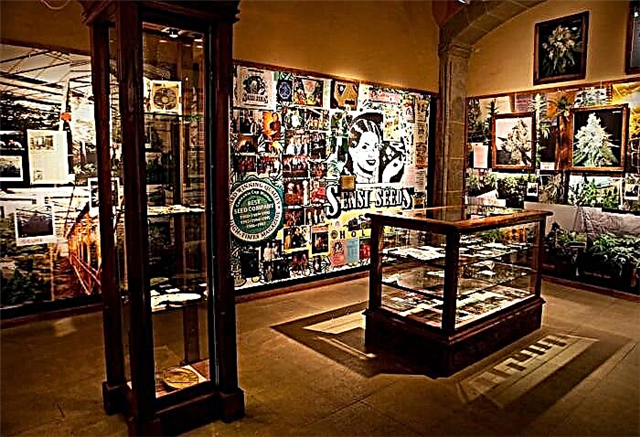
Museum of Erotica
Located in a small room on the Ramblas. The entrance is open only to adults. Pictures with spicy content are hung on the walls, among them there are real objects of art. A tour of the museum is an opportunity to trace the stages of the "sexual revolution", learn about attitudes towards sex in different countries and cultures.Particularly important exhibits are rare objects and mechanisms for sexual games and self-gratification.
Address: Barcelona, La Rambla, 96
Website: erotica-museum.com

Motorcycle Museum
Occupies the lower floors of San Felip Neri, a well-preserved medieval monastery. Motorcycles as a means of transportation are very important for city residents. Therefore, since 2011, when the museum just opened, the number of visitors has been steadily growing. The exhibits show all the milestones in the history of the local motorcycle industry: from 1905 to the present day. The exhibition features products from about 150 factories.
Address: Barcelona, Carrer de la Palla, 10
Website: museumoto.com

Museum in the Monastery of Pedralbes
The architectural ensemble of the monastery is an example of the graceful style of the Catalan Gothic. The museum opened in 1983 in a three-story building with a circular arrangement of rooms. The main exhibits of the exhibition - furniture, religious and household items - have been collected by nuns since the 14th century. Another part of the collection is the Thyssen-Bornemisza art gallery - about 70 canvases dating from the Middle Ages and the Renaissance.
Address: Barcelona, Baixada Monestir, 9
Site: monestirpedralbes.barcelona

War museum
It was opened on the territory of the Montjuic fortress on the initiative of Franco in 1963. At that time, the statue of the generalissimo stood in the courtyard, but later it was moved to the storage. The collection is divided into several exhibitions, including modern and rare weapons, military uniforms, castle models, archival maps with strategic notes. Temporary thematic exhibitions are being organized. The opening hours of the museum depend on the season.
Address: Barcelona, Carretera de Montjuic, 66
Site: ajuntament.barcelona.cat




